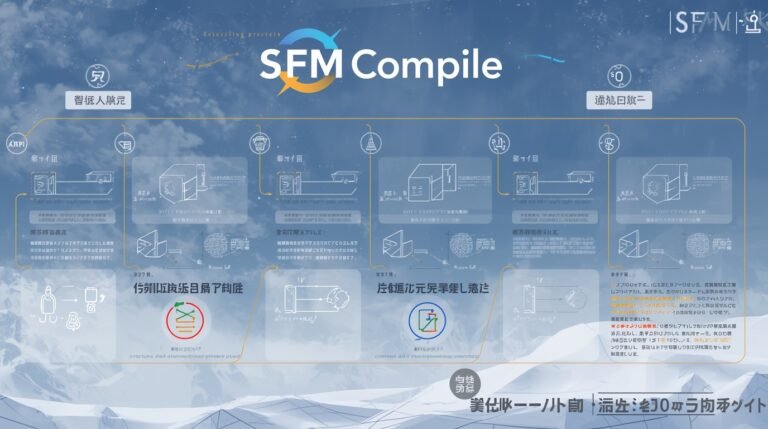How to Compile Models for Source Filmmaker (SFM): A Comprehensive Guide
1. Required Tools:
Source SDK: This toolkit is necessary for compiling models and can be found in your Steam Library under the “Tools” secti
3D Modeling Software: Toolsax, or Maya can be used to create your models.
Crowbar: A model compiler that converts 3D models into the Source format.
Material Editor: For creating .VMT (Valve Material Type) files for textures.
Valve’s Model Viewer: Ideal for checking the compiled models.
2. Model Creation:
Designing the Model: Use your chosen 3D modeling software to create your model. Ensure that you use appropriate topology to avoid issues during the compiling process.
Keep the polygon count reasonable; lower polygon counts can lead to better performance in SFM.
Texturing: Apply materials and textures to your model. Ensure that the UV mapping has been done correctly to avoid texture issues later.
Rigging (if necessary): If your model will be animated, it must be rigged. This entails creating a skeleton that will control the movement of your model’s mesh.
3. Export Model to a Compatible Format:
Export your model to `.FBX` or `.OBJ` format. These file types are commonly used and are compatible with the Crowbar tool.
4. Preparing the Model for Crowbar:
- To prepare your model for Crowbar, you will need to convert the exported file into a format that Crowbar can compile. You may also need to create QC files, which contain instructions for the compiler on how to process the model.
- The QC file will need to include paths to your model, textures, and any animations that the model may have.
5. Compiling the Model with Crowbar:
- Open Crowbar and select the “Model” tab.
- Load your QC file by clicking the “Browse” button and navigating to it.
- Set the output directory where you want the compiled model to be saved.
- Click on “Compile” to begin the process. Be sure to review any error messages that may appear, as they can provide insight into what went wrong.
6. Testing the Compiled Model:
- Once the model is sfm compiled, open Valve’s Model Viewer to verify the model.
- Check for any visual flaws, an ensure it animates correctly if applicable
- If you encounter issues, revisit your original model and fix any problems before recompiling.
7.Importing into SFM:
- Lead Source Filmmaker and use the “Add Model” option to import the compiled model.
- Drag your model onto the timeline or the viewport.
- Apply any animations or tweaks as necessary.
8. Final Adjustments and Animation:
- You may want to adjust lighting and camera angles to enhance the visual appeal of your scene.
- It’s also wise to conduct a preview render to see how everything is looking together before you commit to a final render.
9. Additional Tips:
Keep Backups: Always keep backups of your original model files and QC scripts in case you need to make corrections.
Join Communities: Consider joining SFM communities or forums. They can be invaluable resources for troubleshooting and improving your skills.
Resources: Make use of online tutorials specific to Blender, Crowbar, and SFM. There are many useful resources that can provide additional insights and troubleshoot common issues.
Sure! Here’s a step-by-step guide on how to create and compile 3D models for Source Filmmaker (SFM) and then use those models to produce a video.
Creating and Compiling 3D Models for Source Filmmaker: A Step-by-Step Guide
Step 1: Preparation of Tools
- 3D Modeling Software: Use Blender (free), 3ds Max, or Maya.
- Compiler: Crowbar (used to compile Source models).
- Video Editing Software: You can use Adobe Premiere Pro, After Effects, or any other video editing tool.
Step 2: Creating the 3D Model
1. Install Software:
- Download and install Blender or your chosen 3D modeling software.
- Create the Model:
- Open the software and start a new project.
- Design your model (this could be a character, object, or environment).
- Ensure the model’s topology is correct to facilitate smooth animations.
3. Texturing and UV Mapping:
- Apply textures to your model to give it color and detail.
- Use UV mapping to ensure the textures are applied correctly.
4. Rigging:
If your model will be animated, it needs to be rigged. This involves creating a skeleton that will control the movements of the model.
Step 3: Exporting the Model
1. Export Options:
Export your model in `.FBX` or `.OBJ` format. These formats are compatible with the Source engine.
2. Create the QC File:
Create a QC file that specifies the paths for the model, textures, and animations. A basic structure of the QC file would look like this:
$modelname “your_model_name”$body “Body” “your_model_name.smd”
$texturegroup skinfamilies
{
{ “texture_file_path” }
}
Step 4: Compiling the Model with Crowbar
1. Open Crowbar:Launch the Crowbar tool and navigate to the “Model” tab.
2. Load the QC File:Browse to and load your QC file.
3. Customize Compile Settings:Set the output directory where you want to save the compiled model.
Click the “Compile” button and wait for the process to complete.
4. Check for Errors:If any errors occur, address them and recompile the model.
Step 5: Importing the Model into SFM
1. Open SFM:Launch Source Filmmaker.
2. Import the Model:
Use the “Add Model” option to import your newly compiled model.
3. Set Up Animation and Scene:
Drag your model onto the scene and set any necessary animations.
Pay attention to camera angles and lighting.
Step 6: Creating the Video
1. Use Video Editing Software:
After rendering in SFM, open your video editing software.
Import your scenes into the editing software.
2. Editing:Trim clips, add effects, and include background music.Consider adding title cards or credits as well.
3. Finalize the Video: Once editing is complete, export the final video, making it ready for sharing.
Conclusion
This is a comprehensive step-by-step guide for creating and compiling 3D models for Source Filmmaker, followed by producing a video. It may take some practice, but over time, you’ll gain proficiency in this process. If you have any questions, feel free to ask! Happy creating!




